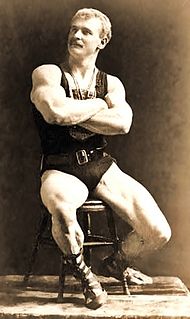Weight  training or lifting light weights, also known as resistance training, is the single most effective way for seniors to overcome the loss of muscle (atrophy), reverse bone loss (osteoporosis), improve balance, resist falls and help to reverse cellular degeneration (mitochondria).
training or lifting light weights, also known as resistance training, is the single most effective way for seniors to overcome the loss of muscle (atrophy), reverse bone loss (osteoporosis), improve balance, resist falls and help to reverse cellular degeneration (mitochondria).
Since 2010, a lab has published multiple studies, published in the Journal of Applied Physiology, in which volunteers followed either the traditional regimen using heavy weights or an alternative that employed much slighter weight stacks. In general, the lifters’ results were comparable.
Many experienced lifters use weights which are too heavy and because of this they use momentum, poor form and often wind up with stress-related injuries. The single most important aspect of any strength training program is form. If you are lifting heavy but breaking form, you are doing your body a disservice and risking long-term injury and other deleterious effects.
Working out in a health club or gym has certain advantages. You usually have a multitude of both free weights and machines to choose from. You can train with a certified professional trainer, who can better monitor your form and prepare a routine that fits your age and any preexisting conditions. To me the biggest downside to gym dynamics is ego. Many men and yes, also women look at the amount of weight other lifters are using and seem to think they must keep up with the Jones’s.
It is not important how much weight you’re lifting on a single repetition. If you lift a heavy weight of 100 lbs. 10-times the total amount of weight moved is 1,000 lbs. Alternatively if you’re lifting a light weight of 40 lbs. 25-times you have moved the same mass of 1,000 lbs. The lighter weight allows you to better manage form while you still can effectively work your muscles to exhaustion. The downside to the lighter workout is that it takes longer.
(Patsi’s Two-Cents: To me, like many women, lifting light weights may be the answer to learning to enjoy weight training. I would not be able to lift 40-lbs, although at my pinnacle I was handling 15 and 20 lbs. I was in my 50s then. Today, recuperating from shoulder surgery and in my 70s, my trainer and I use 10 and 15 lb. dumbbells but repeating four sets of 20. Trust me, if you do enough repetitions to the point of fatigue, you are getting stronger. Bonus-tip: try counting in different languages, Spanish and French, for example, while listening to some great tunes from those countries! Oui, c’est bon!)
The vast majority of 50+ individuals who would not ordinarily engage in resistance training, but wish to overcome a good amount of muscle atrophy and return some of their strength, with lower risk of injury and burnout, a lower percentage of weights, lifted at higher volumes of work load, should meet their expectations and goals.

Patsi, my 40lb. example might have effectively targeted a leg exercise, such as squats. Therefore, 40lbs. for a leg exercise would not be considered an excessive weight for a woman or for a senior.
Yes, 40 lbs. for a leg press is light for a woman (depending on size and physical condition, of course). Even I, with my skinny legs, can do 80 lbs and even 95 lbs. The point is to focus on doing 4 sets of as many repetitions as you can. For me that’s 20 or 30, then pause 40 seconds and repeat four times.